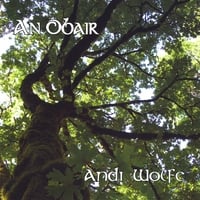I am making progress, though, and so I will resume posting photos on a sporadic basis. They won't be in calendar order, though - sorry. I also have many hours of video to edit, and that's taking much longer. If someone could figure out how to warp time to give me extra hours every day, I might get this done sooner.
 Oct 5, 2010 was Steve's first day in the field with me. The Laidlers and I met Steve at the airport late the previous night, fetching him in Binky, Chris' faithful Landrover. I didn't give Steve much time to sleep in because we had a long drive up north to meet Mr. Wilhelm Hanekom up in Citrusdal. Mr. Hanekom keeps an eye out for Hyobanche for me, and has been very helpful every year I've been in the field since 2002.
Oct 5, 2010 was Steve's first day in the field with me. The Laidlers and I met Steve at the airport late the previous night, fetching him in Binky, Chris' faithful Landrover. I didn't give Steve much time to sleep in because we had a long drive up north to meet Mr. Wilhelm Hanekom up in Citrusdal. Mr. Hanekom keeps an eye out for Hyobanche for me, and has been very helpful every year I've been in the field since 2002.On this day we were looking for H. atropurpurea, which is what you see in these photos.

Hyobanche atropurpurea is unusual in having dark purple flowers. The purple is so dark that the flowers often appear to be black. They have a bit of a yeasty scent and the wide open corolla, facing toward the ground, together with the dark coloration, suggests rodent pollination to me. There's a postdoctoral researcher conducting the pollination ecology studies on this species, so I hope to know in the next year or so what pollinates this plant.
 Only the inflorescence occurs above ground. The inflorescence is three to four inches tall. The underground rhizome(s) can be quite long, but are very fragile and spindly in this species. It's not obvious what it's connected to in terms of host plants, but that's one of the objectives of my work - to figure out the host range. Hyobanche is a root parasite and my preliminary work, based on DNA forensic studies, suggest that it is able to parasitize many different plants.
Only the inflorescence occurs above ground. The inflorescence is three to four inches tall. The underground rhizome(s) can be quite long, but are very fragile and spindly in this species. It's not obvious what it's connected to in terms of host plants, but that's one of the objectives of my work - to figure out the host range. Hyobanche is a root parasite and my preliminary work, based on DNA forensic studies, suggest that it is able to parasitize many different plants.2010 was a big drought year for South Africa and so it was lucky to find any plants in bloom in the warmer regions of the country. Hyobanche atropurpurea is very common and abundant in the mountains above Citrusdal, but we saw only a few plants in bloom, with many others already past flowering. Normally I would see plants of this species in flower through mid-November.

I may be biased, but I think this species is beautiful. Of course, I say that about every species of Hyobanche. . .

Here's a typical habitat shot. The cape fold belt of the Western Cape has many likely spots to find species of Hyobanche.

Steve didn't have too much difficulty adjusting to the time zone. Figuring out how to use the video camera was a different challenge, though.

Boulders are pretty interesting in the Western Cape. If I were a few decades younger, I'd be tempted to spend a lot of time climbing here.

This is Wilhelm Hanekom. He's been walking the veldt every day for most of his eight + decades and knows it like the back of his hand. He's discovered many new species of plants and has a lot of species epithets in his honor. I have a new species of Hyobanche I want to name after him, also.

One the way back to Cape Town, Steve and I stopped at a petrol station that was next to a small pond. The reed bed was full of Southern Red Bishop birds. This is a male in breeding plumage - one of my favorite birds of South Africa.











No comments:
Post a Comment